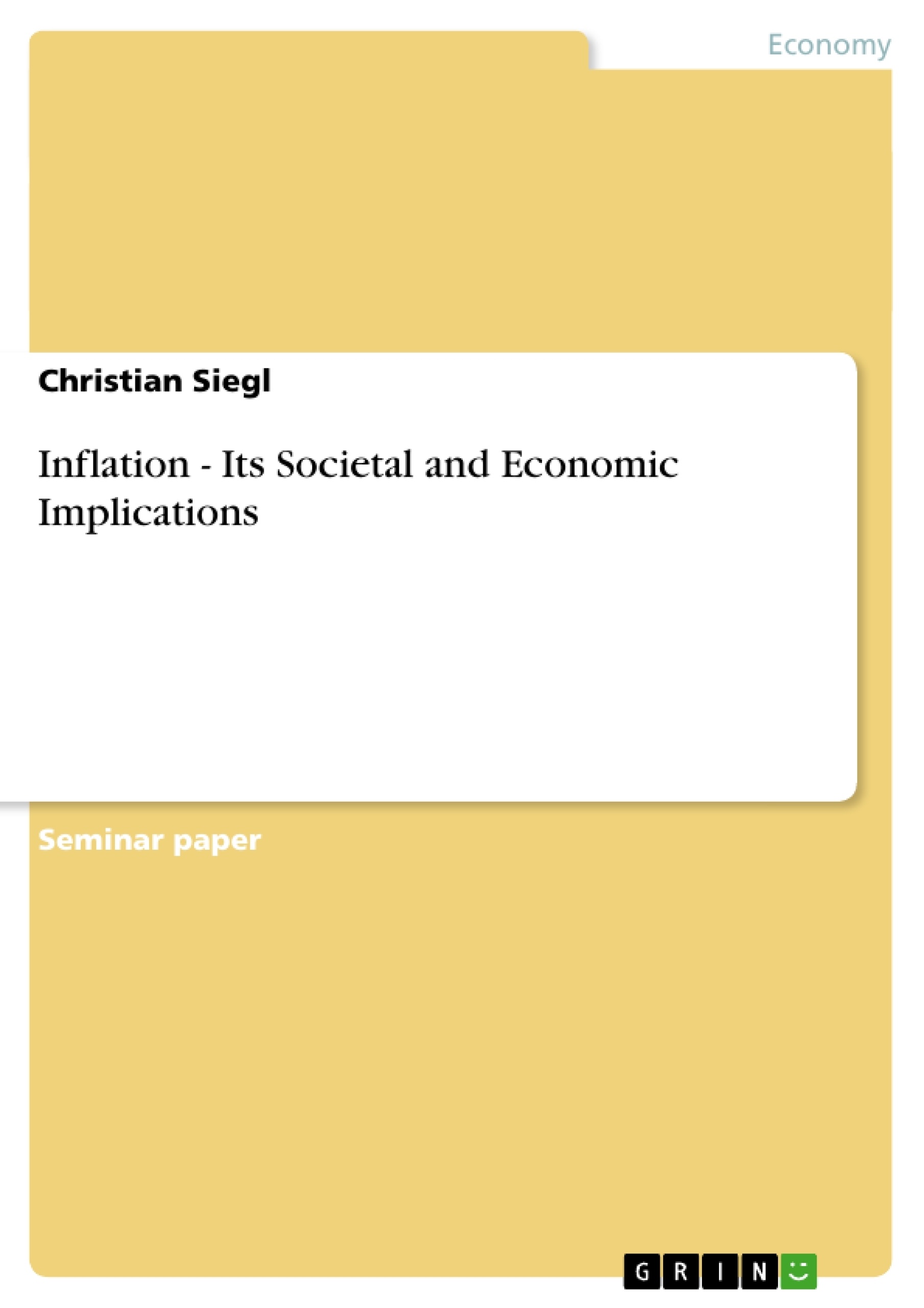The understanding of the cause and effects of inflation is crucial to understanding its impact
on society throughout history. Inflation was a main cause for empires to fall. By lowering the
metal content of the coin or nowadays with the issuance of an ever increasing amount of
“paper currencies” backed by “nothing”, a debasement of the currency was and is a direct
consequence. With the debasement of the currency, people are deprived of the purchasing
power of the currency. Before we look at the ramifications of inflation, a correct and distinct
definition of the term inflation is required. The word inflation is derived from the Latin
“inflare” and means to increase or to balloon.1 In this context it relates to the increase of
money supply by continuing government issue of currency.
Up until the 1940s the term inflation only referred to an increase in the money supply beyond
the increase in goods and services during a given period of time.2 By this definition, the cause
of inflation is easy to determine; namely the institution issuing the currency. From the 1940s
through to the present day, the prevailing definition of inflation significantly varies from the
historic definition. The standard definition of inflation today adopted by economists and the
mainstream press is that inflation is an increase in prices. This change of the meaning of the
term inflation is by no means harmless since it paved the way towards inflationism. As we
will see later on in this study, inflation has been prevailing in the industrialized countries
since World War I and has been exacerbated by the complete demonetisation of gold in 1971
as President Nixon closed the “Gold window”.
By focusing on the term inflation I will rely on the historic and the Austrian economic
definition due to its longer period in use and its higher accuracy. The modern definition of
inflation as simply rising prices looks more at the symptoms of monetary inflation and not at
the cause. An understanding of the real cause of inflation is vital to an understanding of
fixing it once it reappears.
Inhaltsverzeichnis (Table of Contents)
- 1. Historic and modern definition
- 2. The effects of monetary inflation
- 2.1 Consumer price inflation
- 2.2 Asset inflation
- 3. Impact on society
- 3.1 The winners of inflation
- 3.2 The losers of inflation
- 4. Is inflation a natural phenomenon or a policy tool?
- 5. Future outlook for price inflation
Zielsetzung und Themenschwerpunkte (Objectives and Key Themes)
This seminar paper analyzes the concept of inflation and its various implications on society and the economy. It examines the historical and modern definitions of inflation, exploring the shift from focusing on money supply to the current focus on rising prices. The key themes addressed in this paper are: * The effects of monetary inflation on consumer prices and asset values. * The impact of inflation on different segments of society, highlighting both winners and losers. * The debate surrounding inflation as a natural phenomenon or a policy tool. * The future outlook for price inflation and its potential consequences.Zusammenfassung der Kapitel (Chapter Summaries)
The first chapter delves into the historical and modern definition of inflation. It highlights the shift in understanding from focusing on the increase in money supply to the prevailing focus on rising prices, tracing the development of this concept from its origins in the 1940s. The chapter also emphasizes the significance of understanding the true cause of inflation, rather than merely focusing on its symptoms.
Chapter two examines the various effects of monetary inflation. It introduces Chart 1, demonstrating the growth rate of the US money supply (M3) and its correlation with inflation. The chapter then explores the impact of inflation on consumer prices, highlighting the "lag effect" between money supply growth and price increases. The discussion delves into the concept of the "wage-price spiral" and its implications on the purchasing power of individuals. Chart 2 is presented to further illustrate the tight connection between the money supply and consumer price increases.
Schlüsselwörter (Keywords)
The key concepts and terms explored in this paper include monetary inflation, consumer price inflation, asset inflation, wage-price spiral, money supply, velocity of circulation, purchasing power, and the debate regarding inflation as a natural phenomenon or a policy tool.- Arbeit zitieren
- Christian Siegl (Autor:in), 2009, Inflation - Its Societal and Economic Implications, München, GRIN Verlag, https://www.grin.com/document/133740



